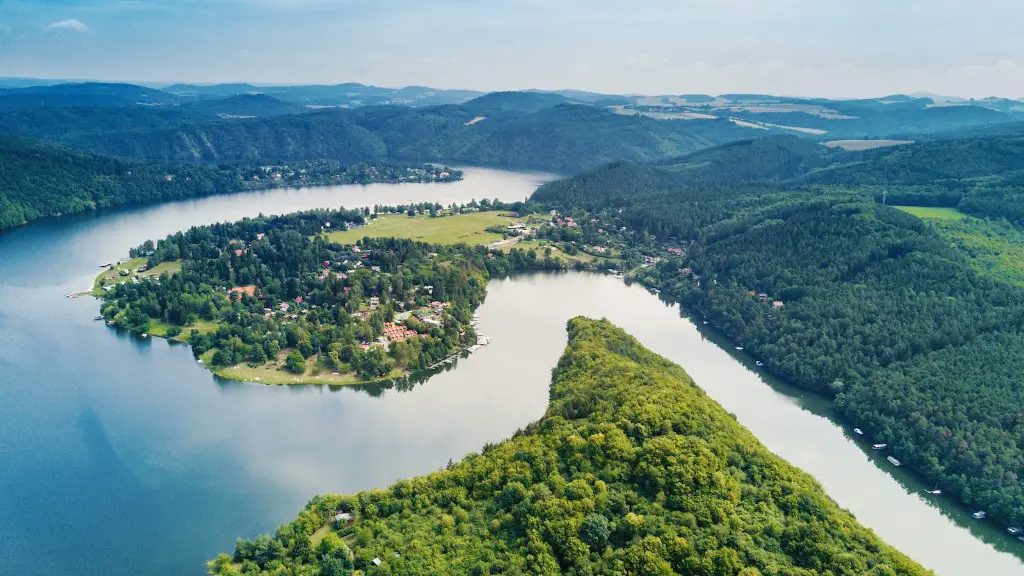Causes of Yangtze River Floods
The historic Yangtze River floods are primarily caused by heavy rains, high tides and meltwaters from the area’s significant snow accumulation along the Tibetan Plateau. During late summer, monsoon rains saturate the Yangtze basin, causing the river’s water levels to rise drastically, deluging nearby low-lying areas and communities.
The immense size and growing population of the Yangtze basin, estimated at over 450 million people, greatly contribute to the severity of the flooding. Rapid industrialization, multiplying urban centers and expanding agriculture have put an ever-increasing strain on the river’s natural resources, meaning the Yangtze watershed is much more adversely affected by the impact of climate change.
Urban Expansion and Land use
Urban expansion and poor land management practices are leading to increased flooding around the Yangtze region. This includes deforestation, land conversion, and damming of the river for infrastructure projects.
Deforestation of the Yangtze River’s valley has caused a decrease in the amount of land available to absorb excess water from flooding. It has also contributed to reduced biodiversity in the region, particularly at the mouth of the river.
The large-scale damming of the river for economic projects has also contributed to increased flooding. These dams increase the volume of water in the Yangtze by storing more of it, leading to higher flood levels downstream. The Three Gorges Dam is the world’s largest hydroelectric dam, and it is most often cited as a major contributor global warming and floods in the region.
Climate Change and Rising Sea Levels
One of the most significant factors contributing to increased flooding in the Yangtze is climate change. Global warming has been a major contributor to increased flooding in the region, as rising sea levels have resulted in an increased amount of water being pushed inland.
Rising sea levels have also contributed to higher river levels, as the force of the encroaching saltwater into the freshwater of the Yangtze has caused the river to rise higher. Additionally, more intense storms due to global warming have put extra strain on natural defences such as dikes and levies.
Impact of Floods
Flooding in the Yangtze region has had devastating economic and environmental impacts. Thousands of acres of farmland have been destroyed, leading to food insecurity and poverty. Floodwaters also regularly sweep away homes, cattle, and people, resulting in thousands of casualties annually.
Environmental devastation caused by flooding includes destruction of ecosystems. Debris, pollution, and sediment accumulated in the region’s reservoirs have had a negative impact on endemic wildlife and their habitats, leading to decreases in biodiversity.
Prevention Strategies
There are several strategies that have been enacted to reduce the impact of Yangtze River floods. The most commonly used methods include early warning systems, the construction of levee and floodwall systems, and dredging of the river to allow excess water flow.
Early warning systems alert people of impending floods, giving them time to move out of danger areas and protect their possessions. In addition, levee and floodwall systems are often built to contain floodwaters and keep them away from populated areas.
Dredging of the river is another strategy used to reduce the impact of the floods. This method involves excavating the riverbed and removing sediment to increase the capacity of the river, allowing more of the floodwaters to pass through the river.
Post-Flood Preparedness
In addition to strategies for preventing floods, it is also important to enact policies for post-flood preparedness. This includes providing aid to flood survivors, such as access to food, clean drinking water, healthcare, and sanitation.
Long-term strategies for post-flood recovery include the creation of projects to ensure the ongoing protection of communities from future floods, and the restoration of the environment. Projects such as the creation of new freshwater reservoirs, water diversions, and flood control dams can help reduce the impact of future floods.
Environmental Protection Strategies
Environmental protection strategies are also key to reducing the impact of floods in the Yangtze region. This includes implementing measures to reduce air and water pollution, and enforcing strict regulations on land use and agricultural practices.
The Chinese government has also enacted policies to conserve the biodiversity in the area, including protected areas, sustainable fisheries, and the development of green corridors connecting the region’s wetlands and rainforests.
Conclusion
The historic Yangtze River floods are caused by a combination of high rainfall and melting snow on the Tibetan Plateau, a rapidly growing population and industrialization in the basin, and climate change. Environmental degradation, urban expansion and poor land use practices have compounded the problem, leading to increasingly destructive floods.
A variety of strategies have been implemented to reduce the impact of flooding in the region, including early warning systems, the construction of levees and floodwalls, and dredging of the river. Post-flood preparedness and environmental protection strategies are also key to mitigating the effects of Yangtze River floods.


